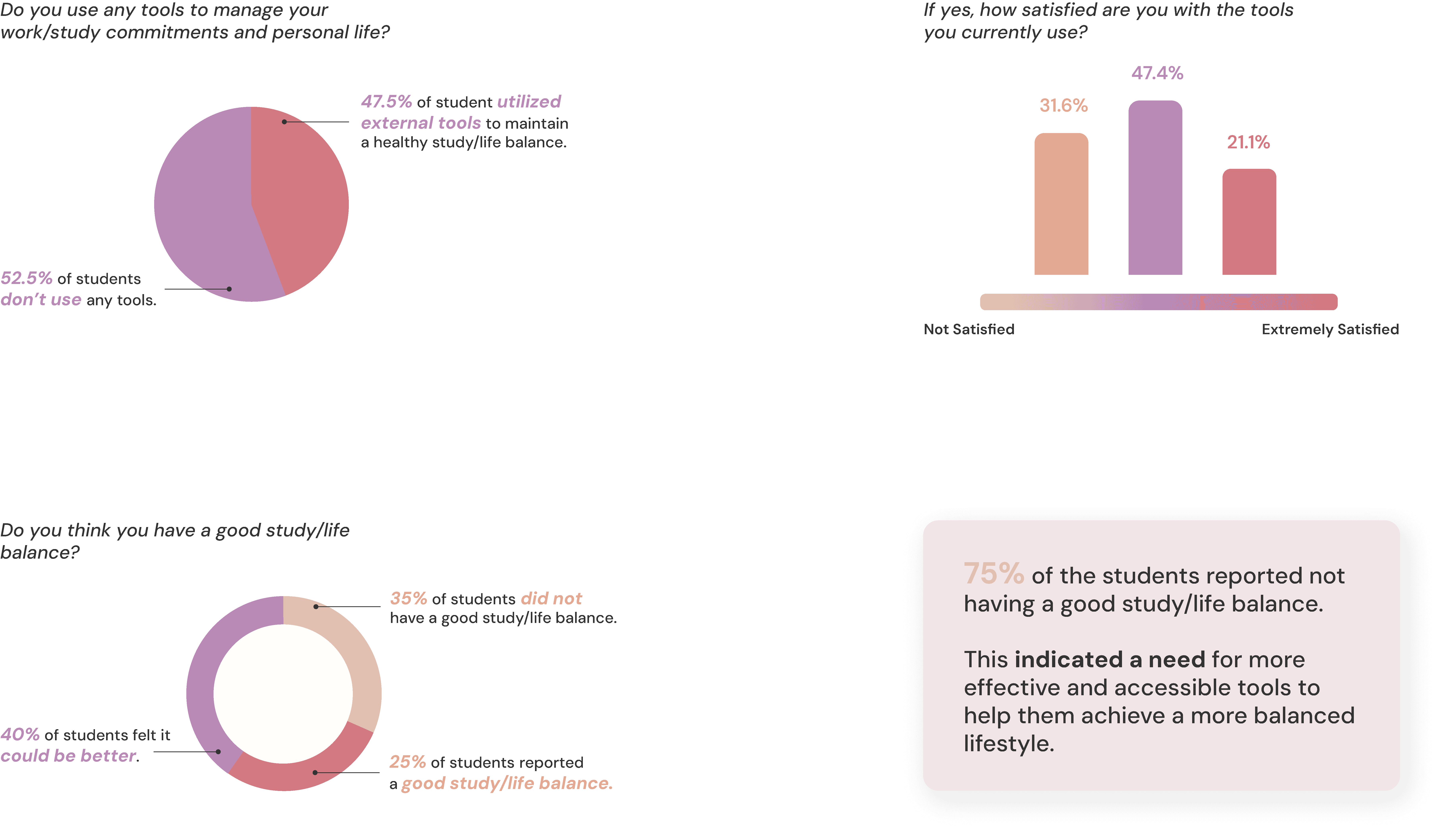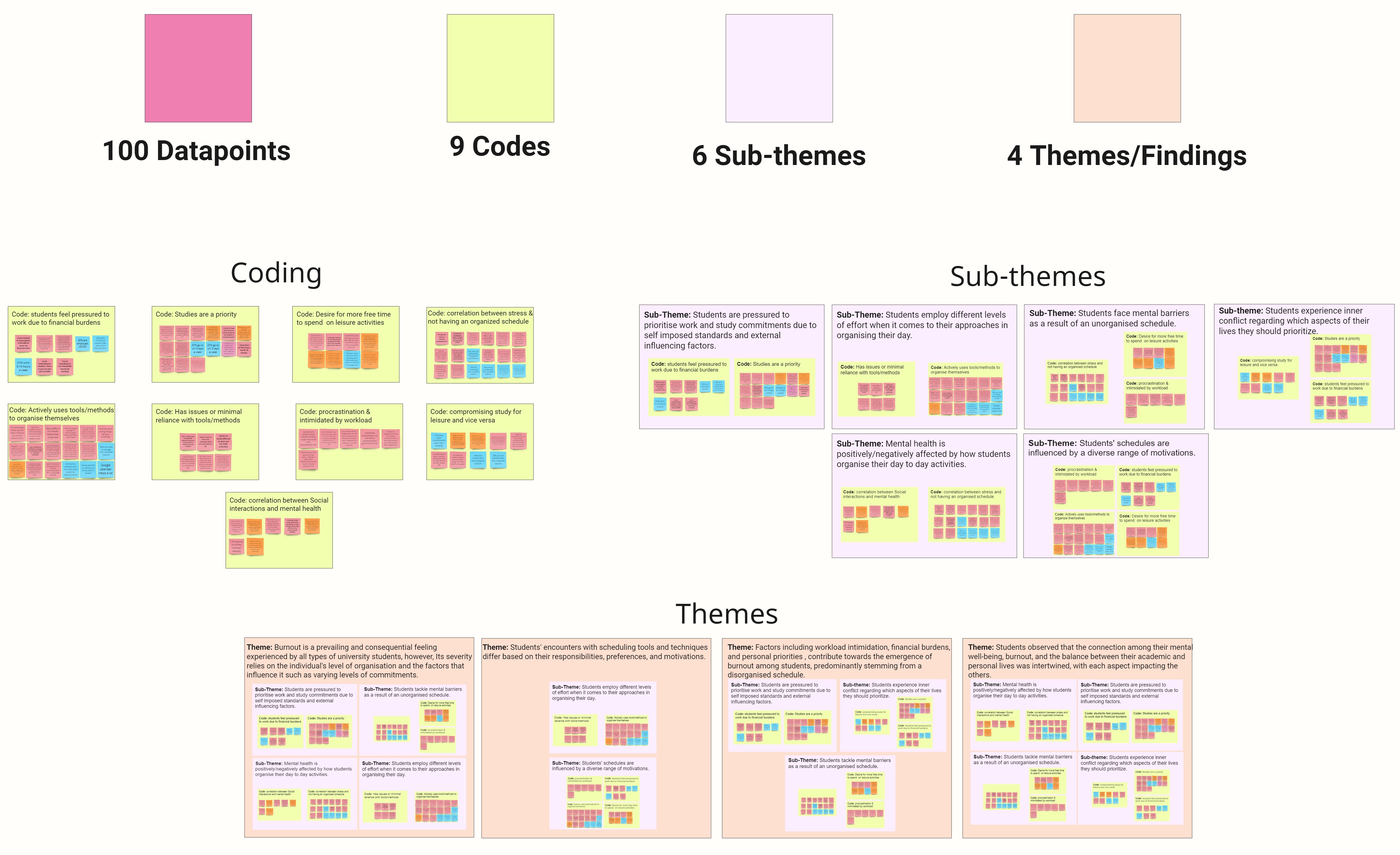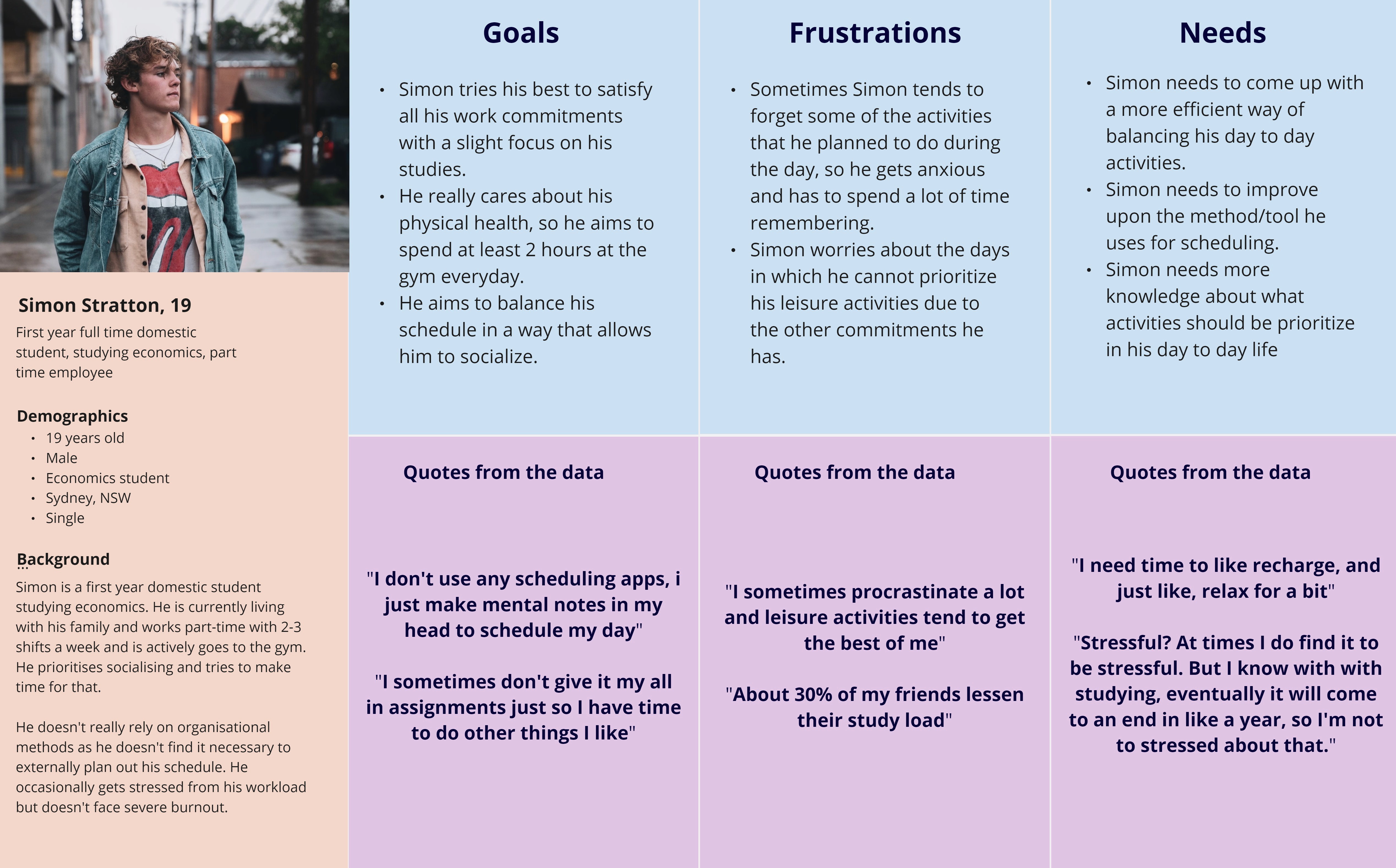[Case 02]
Daily Flow - Mental health focused scheduling
Understanding Mental Wellbeing Through Social Media Interactions
Interaction Design Studio (DECO 2200) - The University of Sydney
[Project Overview]
DailyFlow is a collaborative scheduling app designed to optimize students' study-life balance and enhance their mental well-being. It allows users' to collaboratively build and share schedules, while providing de-stressing tools and activities to improve their mental wellbeing. Apart from this, Dailyflow also provides insights into users' current schedules and utilises an AI model to optimise students schedules based on their current study/life commitments. Ultimately, we aimed to create a solution that empowered university students to avoid disruptive lifestyle choices and to lead a more balanced, stressfree lifestyle.
[My Role]
UX/UI Designer, UX Researcher
[Timeline]
August 2023 - November 2023
[Tools]
Figma, Premiere Pro, Illustrator, Miro
[The Problem]
University students often face increased stress and reduced mental well-being.
As a university student, I’ve noticed how myself and many of my peers often took our academic pursuits as the sole priority and ignored other aspects of our life, leading to a very unbalanced, unsustainable, and ultimately stressful lifestyle.
[The Solution]
Self-organisation is the key
[Feature 4 - Fostering Accountability]
Allows students to post inquiries, and also search up existing inquiries.
Serves as a platform where students can support each other in staying accountable in maintaining a balanced lifestyle.
Connects to a profile page where students can keep track of their post activity.
[Our Approach]
[Research]
Our research could be divided into primary and secondary research, where secondary research included white paper research and competitive analysis to understand the problem space and existing solutions.
Our primary research triangulation included questionnaires, user interviews, and dairy studies. All of this data was then synthesized by conducting a thematic analysis, which helped in persona development, storyboards, and developing our design ideas.
[White paper research]
A way to lead a balanced, stress free lifestyle…
[Competitor Analysis + The gap]
None of the competition had integrated habit tracking and wellbeing tools.
[Problem statement]
[Online surveys]
75% of our respondents admitted to not having a good study/life balance.
[User interviews]
[Dairy studies]
[Summary of findings from interviews and dairy studies]
Workload intimidation and unbalanced lifestyle are the leading causes of mental health issues.
[Data synthesis]
[Insights]
Direct correlation between level of self organization and mental health.
[Refining the problem]
[Personas & storyboards]
[Concept ideation]
[Decision matrix]
Evaluating our concepts
[Solution]
The omni-channel solution
[Sketching and wireframing]
[Testing + Improvements]
[Iteration 2]
Testing method
Cognitive Walkthroughs - 3 sessions.
Think Aloud Protocol & SUS Survey - 6 sessions.
6 tasks to be completed.
[Key findings]
Improve button size and placement for better visibility.
Include visual indicators to inform users of the function of less obvious features.
Place relevant options closer to each other for better discoverability.
Have multiple options to navigate to the same result for convenience.
Simpler options and functions are better understood as they give the user less to think about.
[Iteration 3]
Testing method
Heuristic Evaluation - 3 expert testing sessions .
6 experts in total (3 sessions - 2 features each).
Average time per session - 1h 40m.
[Key findings]
Added an info icon next to collaborate/personal tabs.
Users found the wellbeing page to be un-engaging.
Included an onboarding screen explaining locking events.
Simplified the layout of the community page to avoid information overload.
Changed font sizes and iconography to fit industry standards.
[Iteration 4]
Testing method
Think Aloud Protocol + Loop 11
Tested by 17 users
Average time per session : 11 minutes.
All sessions were monitored and conducted remotely.
[Key findings]
Made intended features more obvious - had consistent visual hierarchy to improve legibility.
Included infographics and icons where required for greater user engagement and comprehension.
[High-fidelity re-design]
[Iteration 5]
Testing method
Think Aloud Protocol
Tested with 6 users.
[Key findings]
Improved color palette to be more inviting and visually appealing.
Included icons and descriptors where necessary.
Improved the general aesthetics of the UI to be more modern and visually appealing.
[Final screens]
[Key Learnings]
[Future work]











































